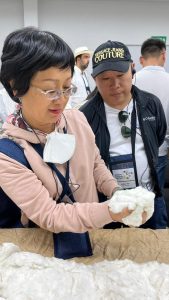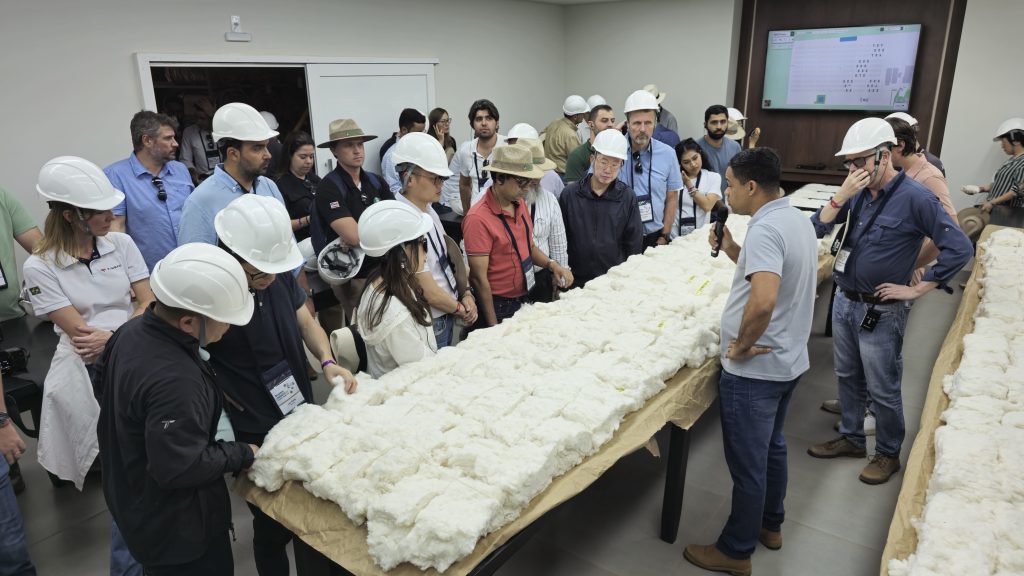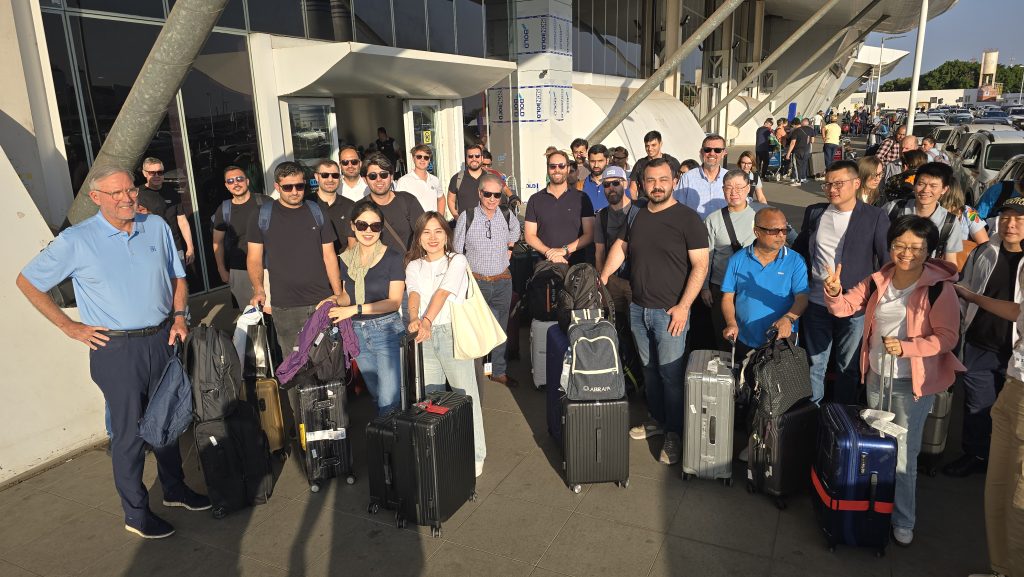Importers come to Brazil to discover ‘the secrets’ of Brazilian cotton
Calendar and Events |
In order to understand how Brazil has grown its global cotton market share, 21 entrepreneurs from textile industries in eight different countries took part in an intensive range of visits in Brazil. The “Buyer’s Mission” visited farms, cotton gins, mills, laboratories and research centres in five Brazilian states.
The exchange program is in its eighth edition and this year it was held from July 26th to August 5th. The tour is run by Cotton Brazil, a program set up by the Brazilian Cotton Growers Association (Abrapa) to promote the entire Brazilian cotton production sector internationally.
Alexandre Schenkel, president of Abrapa, explains that the aim of the mission is to increase the level of trust between importers and Brazilian farmers. “Throughout these 11 days of close contact, buyers could see different stages of our production process, in different growing regions around the country. This transparency contributes to greater levels of trust in our trade relations”, he added.
The guest delegation included industrialists, executives and entrepreneurs representing companies with operations in Bangladesh, China, Colombia, South Korea, the United States, Honduras, Mauritius, India, Mexico, Pakistan, Turkey and Vietnam. In all, nine locations spread over five Brazilian states were visited.
The program was well received by the participants. At the Boa Esperança farm, in Lucas do Rio Verde (MT), Sarah Hong the Chinese Texhong International Group Ltd., enjoyed seeing that the cotton lots are separated at picking. “This is very important because in spinning we need to have standardised lots to make the most of our production capacity”, she explained.
From Pakistan, Raza Ellahi, representing Ellcot Spinning Mills and Prosperity Weaving Mills, highlighted the high technology used in picking.
“Picking is efficient, as they use state-of-the-art machinery and the people are well-qualified. I spoke with the farm managers to understand how they divide the plots, how they choose the varieties and organize the picking machines,” he said.
The workplace environment caught the eye of Faizah Mahmoot from Bangladesh’s Mehmud Industries. The visit to the Bom Futuro farm, in Campo Verde (MT), was her first time on a cotton farm, and her experience was a positive one. “We saw everything from picking to ginning, including cotton classing. We also learned about the group’s social and environmental programs and it was a great experience,” she commented.
 Whiteness and quality of Brazilian Cotton
Whiteness and quality of Brazilian Cotton
In the state of Bahia, in the Brazilian Northeast region, Qi Zhang, from the Chinese JYTX Textile Co., was amazed by the ‘whiteness’ of the cotton on the Warpol farm, in São Desidério (BA). “In the loading section at the cotton gin, the bales are all separated uniformly, which is very good for us in the textile industry. But what caught my attention the most was seeing how white Bahian cotton is,” he said.
According to Qi, another highlight is the focus on traceability.
“Cotton samples are taken as soon as they come out of the press. Each sample gets a unique identification number, which is the same number that appears on the bale packaging and on the QR Code. So it really is bale-by-bale traceability.” he emphasised.
In Goiás, another cotton growing state in the Brazilian Centre-West, the technological innovations at the Pamplona farm, in Cristalina (GO), caught the attention of Emre Akran, from Akcanlar Tekstil, a Turkish company. “The farm uses its own software that forms the batches of cotton according to the buyer’s request, using visual and instrumental classification using HVI (High Volume Instrument). That was very interesting.” he pointed out.
The international delegation also visited research centres and laboratories, in addition to the Brazilian Reference Centre for Cotton Analysis (CBRA), in the country’s capital, Brasília. The response to Brazil’s monitoring system for classing the bales was positive.
“We visited the Abapa classification laboratory (the Bahia Cotton Growers Association) and we saw that international standards are adopted there and the result has a high reliability level in the HVI tests. Seeing this reliability in the results gives us more confidence”, explained South Korean Ji Woon Park, representing Whail Spinning.
Jamil Uddin, from the Bangladeshi company Akij Textile Mills, agreed with Park. “The Brazilian centre (CBRA) is a benchmark for cotton quality in Brazil because it standardises all the laboratories in the country so that they have high reliability in their HVI results (in the tests conducted). And that’s exactly what we need: reliable test results. This way, I can make the best decision and make the best use of the cotton in my spinning mill”, explained Uddin.

Number 1
In the 2023/24 season, Brazil achieved the position of being the largest cotton exporter in the world for the first time in history. Exports are expected to be around 2.6 million tonnes. Reaching this position came sooner than Abrapa had expected, but that doesn’t mean the work will stop.
“Our mission is to go beyond numbers and statistics. We want to establish solid commercial ties and show the whole industry, the retail sector and global consumers that cotton is a natural, renewable, biodegradable and responsibly produced product.” said Marcelo Duarte, director of International Relations at Abrapa and in charge of the Cotton Brazil program.
As well as Abrapa, Cotton Brazil has the support of the Brazilian Trade and Investment Promotion Agency (Apex Brasil) and the National Cotton Shippers Association (Anea).

